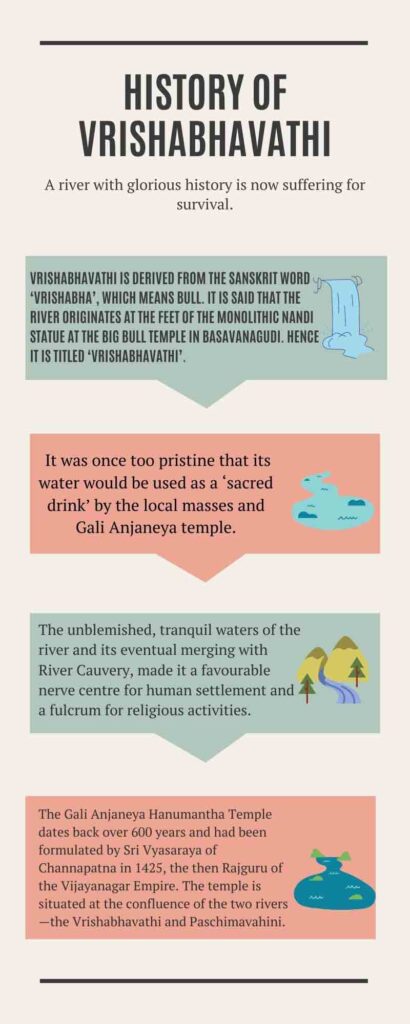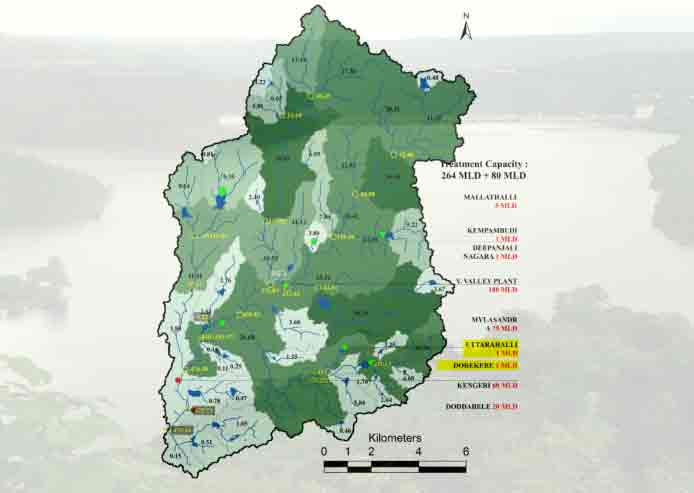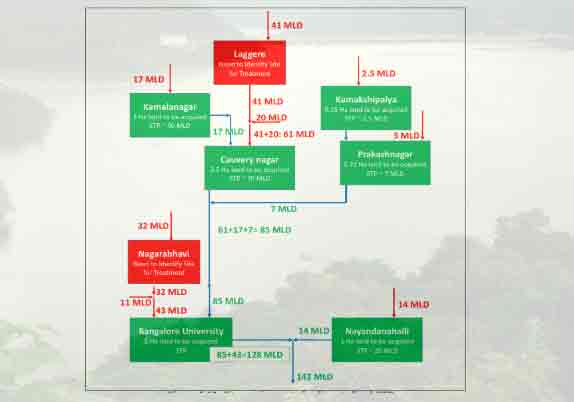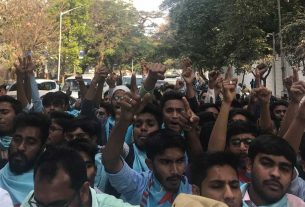Six months after it was announced, the Vrishabhavati rejuvenation project is waiting for funds.
A Rs. 1500 crore project to revive the Vrishabhavathi River has not started even after six months due to lack of funds.
Jayalaxmi B.S., chief Executive Engineer of Bengaluru Water Supply and Sewage Board(BWSSB) said, “The project has not been started because of lack of financial assistance. Rs.111.26 crore has been allocated to us by the government till now out of which Rs.47.5 crore has been released.”
A report by the National Environmental Engineering Research Institute (NEERI) suggests that BWSSB treats 260 millions of litre per day (MLD) of sewage a day but allows 431 MLD to flow into the Vrishbhavathi River. The city produces an estimated 1,440 MLD of sewage out of which 530 MLD is drained into the Vrishbhavathi which is one third of the total sewage produced in a day.
Jayalaxmi said that the Karnataka State Pollution Control Board (KSPCB) department is the monitoring head of the project. “Service roads are not available around the river which is one of the challenges of the project,” she added.

River Vrishbhavathi, a pre-eminent tributary of Arkavathy is now recognised as Vrishbhavathi Nala on Google maps. Residents nearby complain of a constant pungent smell that comes from the river. Yash Aggarwal, a resident near the river at Mysore Road said, “The river water turned blue in the initial days of lockdown because no one was dumping waste in it. But, now it has turned back to its original colour that is black. The smell is unbearable.”
In July 2021, Minister for Environment and Tourism C P Yogeeshwara announced a Rs.1500 crore schemefor the rejuvenation of the river. The scheme aims to treat 1,500 MLD of waste water scientifically in three stages to fill tanks and lakes in the area so it can be used for agricultural purposes by the farmers.
Farmers in 19 villages of the Ramanagara district adjoining Byramangalalake including Ittamodu, Ramanahalli, Godahalli, and Byramangala can use treated water for agriculture after the project is implemented. The tertiary treatment for 1 MLD water costs Rs. 1 crore. Hence, the estimated cost to treat 1500 MLD of waste water will be Rs 1,500 crore.
However, Mahesh T, Chief Environmental Officer of KSPCB said, “It is not rejuvenation program; funds are being allocated for the studies. Different department are studying the problem.”
There have been several attempts in the past to treat the river water and make it fit for irrigation and other purposes. In 2006, the government took an initiative to clean the river after complaints from the local residents. The polluted water affected the health of the people and the area became prone to water-borne diseases.
Goutham Y, Junior Health Inspector at Solid Waste Management Department, BBMP said, “Currently our department is working on the K-100 valley project. We are planning to clear the garbage from the storm water drain and send it for disposal in landfills.”

After several failed attempts, the National Environmental Engineering Research Institute came up with a project that involves forming wetlands every five kilometres in order to clean the river naturally until it joins Arkavathi in Kanakapura.
Nivedita Sunkad, an activist who has been working with the Vrishbhavathi river revival campaign said,“KSPCB formed a committee but we have had only one meeting so far and that too one and a half years ago.” She added that KSPCB is using the wrong methods to solve the issue. They are trying to treat the water at the tail, which is ineffective.
Byramangala Lake which is located about 40 Km west of Bengaluru city gets most of its water from the Vrishabhavathi River which has now become polluted.
Sandeep Anirudhan, an environmentalist said, “BWSSB still relies on old methods to treat sewage. They try to collect the sewage at a place and treat it which is not enough keeping in mind the amount of sewage that is produced every day.” He added that the city planning also has a major role in the problem as the industries are located on the banks of rivers and lakes. They dump industrial waste in the water bodies that pollute them.

The state government missed the deadline of Dec. 2020 for commissioning of Sewage treatment plants in the valley. Most of the STPs in the valley are not functioning properly. The two STPs in Nayandahalli with the capacity of 180 and 150 MLD are expected to take another three months to start functioning.



